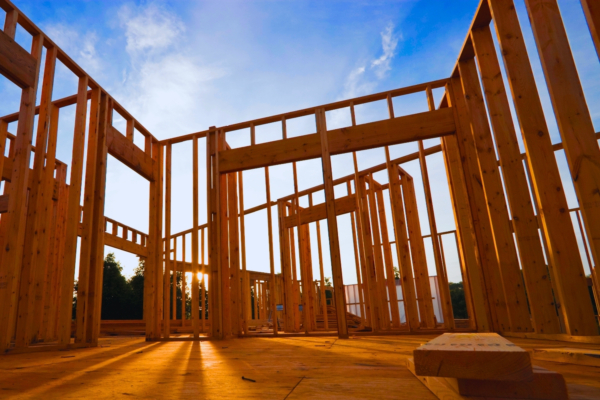
Growing Your Business with a Brick-and-Mortar

For thousands of years, business has been conducted in physical locations. Our world has changed significantly over the past few decades, with a huge boom in online services and shopping. Despite the shift online, brick-and-mortar businesses are still popular. For some businesses, like lawyers, dentists, bakeries, restaurants, and other professions that provide in-person services, a brick-and-mortar will always be necessary. When it’s time for a second location, do you know where to start?
Before Opening a Second Location, Ask These Questions
Another location means more business, more clients, and potentially more profit! But have you run the numbers on what exactly that may involve?
Your current location’s performance
Your research should start where you are currently located. By asking yourself pointed questions, you’ll be able to determine if your business is really ready for a second location.
Ask yourself:
- Do I have room to grow in my current location?
- Is my business performing profitably and consistently?
- If I did have more space, do I have the capacity to expand my business?
- What are the challenges in my current location?
- Would my current challenges be solved with a second location, or will they get worse?
Running a potential second location
You should now have a better idea of what your current location’s status is, but how would a second location fit into your overall business strategy?
Ask yourself:
- What problems would a second location solve?
- What problems might happen because of a second location?
- Am I willing/able to run both locations, or would I need a second business or office manager?
- How many employees would I need to hire?
- What equipment would I need?
- Will this location be entirely new, or should I acquire an existing business and re-brand?
- Do I want to take out a loan for a second location, or do I have enough cash on hand?
- Am I prepared for lengthy renovations that might delay the opening?
- How soon does the second location need to be profitable?
Harnessing growth
If your current location is always booked, has lines out of the door, or is doing record-breaking sales month after month, it may be time to consider a second location. You may find the same success in the second location!
Take the time to identify the characteristics that made your first brick-and-mortar so successful. Replicating these qualities as much as possible is an important part of maintaining your growth and making sure you’re not overreaching with a second location.
The Importance of an Online Presence
While having a brick-and-mortar property can be very beneficial, that does not mean that business owners should only have a physical presence. The most powerful thing business owners can do is establish a dual presence both in-person and online. Customers can read all about the business on the website, carefully review the list of services, and read reviews–all before they step into the physical location. If you’re not marketing your business online with all of this information, you’re running the risk that your physical location may not even be visited.
By having both an online presence and a brick-and-mortar store, business owners can take full advantage of customer relationships. For example, a customer may visit a website to look at services and read reviews, and then go into the location to make a purchase. If your business made an impression, you may find yourself with a repeat customer!
For service-based businesses like lawyers, offices, salons, dentists, and more, online reviews are crucial. When people shop around for services like these, they’re looking carefully for details about complaints, positive aspects of the business, and all-around customer experience. One bad review might not dissuade someone from visiting your business, but twenty consecutive bad reviews will definitely have a negative impact on your business.
When you’re evaluating a second location, make sure your online presence is polished and curated.
People should be able to easily find your:
- Address(es)
- Phone Number
- List of services or products
When you do add a second location, make sure your online presence reflects the new growth!
Finding the Right Property
You’ve decided that opening a second location is right for you. Congratulations! Here are just some of the considerations to tackle right away.
Set a firm budget
If you’re leasing the space, this will make up a sizable chunk of your monthly operating expenses. Consider a commercial price to rent ratio, where you compare how much you make in gross monthly sales to how much you pay in rent. For example, if your gross monthly sales are $70,000 and you pay $5,000 in rent, your commercial price to rent ratio is around 7%. A good rule of thumb is to keep that ratio between 3 and 10%. Be realistic about your potential profit and operating costs, and consider best and worst-case scenarios. Can you afford to lease the space if you have low sales several months in a row? Keep in mind that there will be costs besides the monthly rent, which include insurance, property taxes, utilities, furnishings, remodeling, and more.
Maybe you’re ready to buy a commercial space as a second location. That can have a lot of benefits, including controlling the cost of the space, any renovations you need to do, and if you buy a bigger space than you need, you may even be able to get some extra income from a commercial renter. Buying a commercial building is more complicated than renting a space, but it might set your business up for even more success.
Determine size needs
Before you start looking, you should also have an idea of roughly what size property you need. If this is your first brick-and-mortar business, determining the size may be a challenge, but you can find a lot of information online by researching similar stores in your industry and market to get an idea of your potential sales volume. One formula you can use is dividing that potential sales volume by the industry’s average sales by square footage.
For example, let’s say your shoe store has the potential to do $150,000 per year in sales, and industry research tells you that the average sales-per-square-foot for a shoe store in your market is $170. By plugging these numbers into the formula, you will find that the amount of selling space you need is around 885 square feet. Crunching these numbers will give you an idea of what size properties to look at, and how far your budget will go.
Find the right location
Location can make a massive difference in the success of your business.
Here are some questions to ask as you consider location:
- How visible is the property, and what level of foot traffic does the surrounding area get during business hours?
- Does your target customer shop and/or live nearby?
- Are you near competition? (This can be a good thing!)
- Are you able to have a sign on the building, and if so, what size?
- Is it easy to get in and out of the location?
- Is there parking?
Fund and Grow Your Business
Unless your business is wildly profitable, you’ll probably need to take out a commercial loan to expand your business. Make sure you shop around for a knowledgeable lender who knows your area, offers great terms, knows commercial lending inside and out, and can help you take your business to the next level.
Having a brick-and-mortar location (or multiple locations!) can be really beneficial with the right business strategy. If you’re ready to grow your Texas business, contact the expert commercial lending team at Amplify Credit Union!
Looking for a Commercial Loan?
Amplify’s commercial lending team can help you find the right loan for your business!

